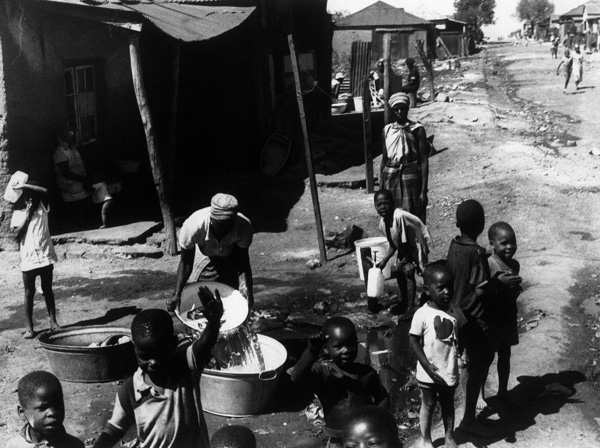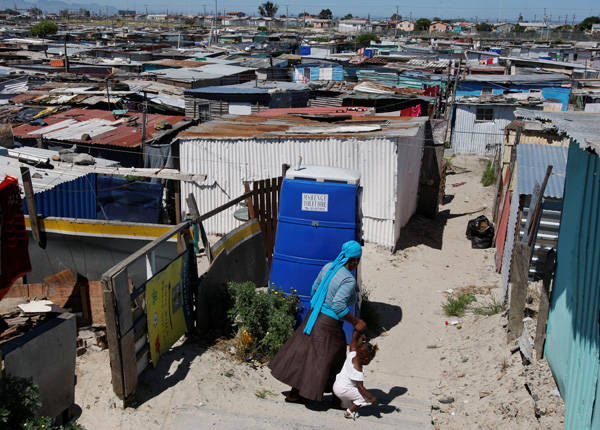South Africa Then and Now
Still in the Grip of Capitalism-Imperialism
Housing
January 20, 2013 | Revolution Newspaper | revcom.us

Photo: AP
THEN
Above: A black shantytown under the apartheid regime. The apartheid system was in effect for nearly 50 years, until 1994. A wealthy minority of white settlers held all political power and used it to rob the land, labor and resources of the country, enriching European and U.S. imperialism, while the great majority of black people were segregated, denied any human rights or respect, and lived in deep poverty. First under British colonial and then white apartheid rule, black people were increasingly driven into the cities to seek jobs, since farmland was overwhelmingly controlled by whites, with only slave-like jobs as agricultural workers available to the native black people. But while blacks made up the bulk of the labor force for the thriving cities, blacks were not allowed to live in the cities themselves. Even existing multi-racial settlements were forcibly broken up, with the black residents then forced into the segregated shantytowns. So huge numbers were crammed into vast overcrowded settlements well away from the heart of the cities. Geographical isolation was enforced so the oppressed masses could be politically and militarily controlled by the apartheid regime. Housing was a mix of barracks-style blocks built by the government, and shacks pieced together from tin, wood, cardboard and other materials. Substandard schools, unpaved streets, no sidewalks, no electricity, no plumbing were the norm. And the shantytowns were a scene of constant police harassment and brutality, as well as a growing radical and revolutionary ferment among the people.

Photo: AP
NOW
Soweto shantytown, 2009—15 years after the fall of apartheid, 70 to 80 percent of farmland was still in the hands of the white elite, and survival in the rural areas was ever harder. 61 percent of the population was now urban, and 33 percent lived in "informal settlements" without electricity, sanitation services, sewers and water. Today's overall squatter population is estimated at around 10 million. The African National Congress government says it has built 2.8 million new housing units, but it is basically continuing the housing program of apartheid, keeping the masses of oppressed black people in overcrowded, heavily policed settlements, a safe distance from the gleaming city centers that it showcases to the world. The new housing—called "kennels," or "tin can towns," by the people—are at best concrete versions of the apartheid shantytowns. Up to seven people live in a 180-square-foot concrete box with a corrugated tin roof; seven families may share access to a single bathroom, and transportation to jobs and shops is non-existent.
Sandy Rossouw, a 42-year-old woman resident of one of these new towns, tells how her family was evicted from their home in Athlone because it was too close to the site of the 2010 World Cup Games. Now she shares a bed with four other family members. "Here the whole place is under starvation. We can't even afford to make a pot of soup for our children. We send them to school without bread. People sell everything to get food and walk three hours to Athlone just to get a loaf of bread... It's like a jail, like a concentration camp." She continued, "If you're not inside at night, the police beat you. A few weeks ago they pointed an R5 rifle as if they were going to shoot people."
If you like this article, subscribe, donate to and sustain Revolution newspaper.